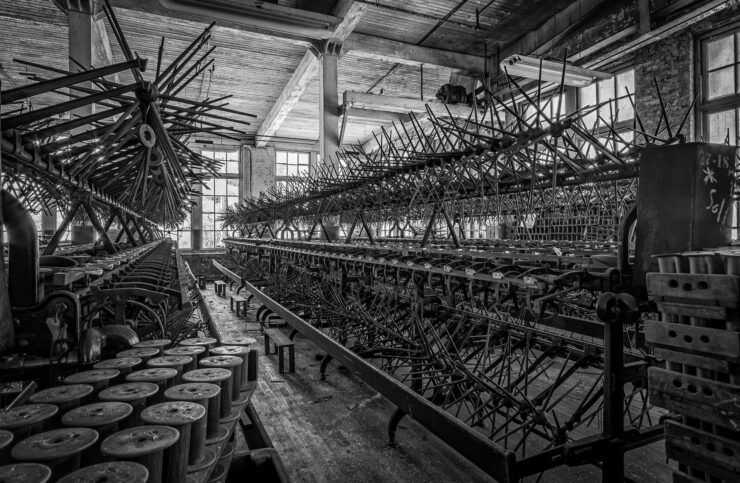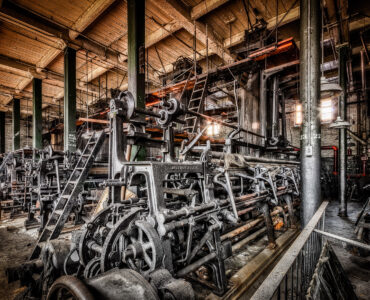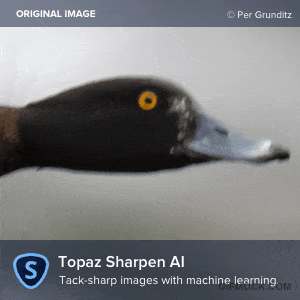Early in 2011 I was contacted by a central Pennsylvania graphic artist about touring and photographing an old mill in Maryland. This was no normal mill though, this was the last completely in-tact Silk mill, left in the United States. Like a lot of abandoned sites, to tour this site, I had to agree not to disclose the name, location, etc. I really wanted to tell the story of the old mill so at the time, I decided that this particular photo essay would be shelved. The mill’s owner Herb has seen that he can generate income from those who wish to explore peacefully and offers “free roaming” tours for $100 per person. The money he charges barely puts a dent is his costs to maintain security, taxes, and upkeep at the mill and keep it in its in-tact condition, but every little bit helps. Right now the mill is in bad need of a roof, so if you are looking for an awesome and safe place to photograph, get a hold of Herb and schedule a tour. He also gives discounts for groups. I will post his contact info at the end of the story if you are interested. Fast forward to 2012. A friend and I were headed south to explore the Shenandoah Valley and decided to add a return trip to the Silk Mill to our list. Unfortunately, due to me getting deathly sick during the trip, a return to the mill was also shelved. Finally, nearly 2 years later, here is my story about the Lonaconing Silk Mill, aka The Klotz Throwing Company.
History
The Lonaconing Silk Mill is nestled in the western tail of Maryland in Allegany County. The mills construction began in 1905 and the processing of silk imported from China and Japan began in 1907. Initially, over 300 people were employed by the mill, but numbers were cut to less than 200 in the 50’s due to competition with the larger and more modernized mills. The antiquated machines could not keep up with the times. On a cold Friday in September of 1957 the mills doors were closed and sealed. The companies machines, dyes, bobbins, employees records, and even their personal effects were all frozen in an industrial revolution time capsule.
The mills current owner Mr. Herb Crawford, seen here conversing with your’s truly, struggles with keeping the mill in tact. Only through a few small historical preservation grants and more so from his tours is he able to barely keep afloat. I strongly urge you to contact him for a tour and photo-shoot, you will not regret it. If you can get a group together he will kindly offer you a discount. Check out his contact info at the end of this article.
The Adventure
Originally when I booked this trip the weekend was free and clear. But, as luck would have it, my band booked a gig on the same day. So the trick would be to drive down the night before, stay over, get up, shoot the mill and then make the mad 5 hour dash back to New York to play the gig. After a good nights rest in Cumberland, MD we hit the road for a short drive into the small town of Lonaconing. The mill was easy to find, located just across the creek that runs through the middle of town. (as always click on the photo to enlarge it)
We park the rental car and make our way up the rickety wooden stairs to the mills front office where Herb greets us. Immediately we are thrust back into 1957 where everything is still in place as it was the day the mill closed. It’s like it was open and operating just yesterday. Filing cabinets, a desk and a chair adorn the office, along with an old adding machine with the original cover on it as place there on that fateful day in 1957.
One of the more curious objects in the office was this fire extinguisher bomb.
This little grenade is loaded with Carbon Tetrachloride, when hurled at the fire, the glass would shatter and the the liquid would displace the oxygen and the fire would immediately be starved of oxygen and go out. Problem is, the oxygen in the persons lungs would be displaced as well. CT was also used as a spot remover/dry cleaning fluid but was found to cause kidney failure and was banned from use. Glad I didn’t pick it up and drop it. Herb opens the office door and sets us off on our self-guided photo shoot.
The first thing we see is a room fully loaded with machines and the morning light is just too brilliant to pass up.
Though the thread has all been removed, all of the bobbins and tags are still in place.
There were no looms here, this mill was making and dying thread for fabric manufacturers. Everywhere you look there are racks upon racks of the now famous bobbins.
This first room is just filled with wonderful textures and industrial goodness.
Personal effects are scattered everywhere. On one of the spooling machines there was a curious book that obviously belonged to quite the saucy employee.
Along with the personal stuff, some maintenance items are also here and there.
In the next room, much larger than the first we find some more personal effects.
At the end of one of the machines were these very unique looking carts with tools and gadgets on them. All of them draped in cloths that looked to be soaked in a waxy grease. Quite odd, but I surmised that they were most likely used to maintain the machines. I couldn’t help thinking these things look like little maintenance robots.
We make our way to the second floor of the mill where I see this cool switch on the wall.
While I am always compelled to flip these switches and imagine all of the equipment magically firing up, there is still live power here in the mill so I did not dare try it. With the bright sun beaming through the old frosted windows, electric light wasn’t needed, or wanted.
Down another aisle I spot this cool little sink and think to myself, what an odd place to put an ashtray. Truth be known, from what I have been able to ascertain, this is a dye or wash sink. The silk threads would be strung from the spools on one side to the sink filled with hot water or dye. The threads would then be wound on a pick-up bobbin on the other side. If anyone knows any different, I would love to hear the story.
One of the things I like about industrial abandonment is the raw “on-the-fly” creativity that you see in the machines and construction. You just know these places were loaded with people that faced complicated problems with a “sure we can do that” attitude. Everything in these places is custom-made and maintained on site.
While the main focus of the shot is the “Y” in the heating ducts, the hanging bucket was the fire extinguisher of the day. You will notice in this next shot that the bottom of the bucket was round as to make sure this bucket wasn’t used for anything but it’s intended purpose. These were filled with sand and not water and were used specifically in areas that oil or liquid fires may be a possibility. These machines needed continual greasing and oiling to operate effectively. Combine that with the heat of the factory and you have a high risk of fire.
On thing is for sure on this freezing March day, the heat was definitely not on. Shooting was fast and furious, just to keep warm. This maintenance area was full of some seriously cool memorabilia.
Everywhere you look here there is a photograph, the entire factory is a frozen moment.
On of my favorite subjects on the second level was this old freight elevator. With the sun shining in from the windows it made for a classic photo.
Have focused mostly on details it was time to get some shots of the machines. One of the more fascinating contraptions were these spindle winding machines.
Spindles, spindles everywhere.
And where there weren’t spindles, there where bobbins, lots of dirty bobbins.
Some places though, there were both.
Finished with the upper level and with time running short we decide to take a quick trip to the basement. Too bad the elevator was not working.
We find the basement well-lit and the culprit to the dead elevator. Here is the dismantled fly-wheel.
The basement also holds a machine shop, various dyes, tools, silk and garment washing machines (that I unfortunately missed) and this cool old Toledo Scale. Complete with the early afternoon sun shining in.
On my way to the machine shop part of the basement I spot these old rusted out dye cans. I used my handy LED flashlight to “paint” the cans instead of using a flash. Camera settings here were as follows: 30 second exposure at f/8 and ISO100 to keep the noise to a minimum. Granted the original color version of this is pretty cool because you can see all of the hardened dyes, but keeping with the vintage theme I present it in black and white. It think it still holds up well.
Finally I make it to the machine shop. It is apparent that parts for the old mill machinery were made right in-house. While many computer related repairs are done in factories these days, no one is making parts on site. Pretty cool!
Upon closer examination I discover that the lathe was a dangerous tool. An old NU-SKIN container, actually called NEW-Skin back then. I didn’t even realize this stuff was around in 1957!
As I turn around to check out the rest of the area, a bright light through the basement window lights this beauty.
Yes folks, that is a 1956 12 ounce Coca-Cola bottle. Only when I got home to process these shots did I see that on the neck of the bottle, near the top, is the thumb print of the employee that sat that bottle down in 1957. Probably thought to him or herself, I’ll take care of that on Monday when I come in. A color version of this has sold well at all of my art shows. This year I will be making this black and white version available. Just be hind me is the life blood to this mill. Lots and lots of oil.
I round out the tour with a trip to the electrical room. I wasn’t sure if any of these were still “live” so I kept my distance.
We make our way back up to the office to bid Herb a farewell. He gives us a couple of the bobbins from the factory and wishes us well. I head outside to snap some shots of the exterior.
It is pretty funny that it is actually warmer outside than it is inside.
Though this old mill was “abandoned” by it’s original owners, it is definitely NOT abandoned by Herb Crawford, it’s owner and caretaker. Herb is working very hard to maintain the mill. He has had to install security measures to keep out the looters and vandals. We know that the photography and urbex communities support Herb and his efforts. Please do NOT try to sneak in. Do the right thing, Help preserve this wonderful old piece of American iconic history. For what your portfolio and life will get out of it, it is well worth the money. Contact Herb Crawford about an official tour @ 301-268-1168.
And remember!

































































Love this!
Thanks Joe, one of my favorite shoots.
What a terrific essay, A.D.! Your photography, as always, really tells the story and I just love the background info you’ve provided as well. A really enthralling story on all counts!!
1957?! Wow! As always–Amazing pictures, Andy! Love reading your articles……